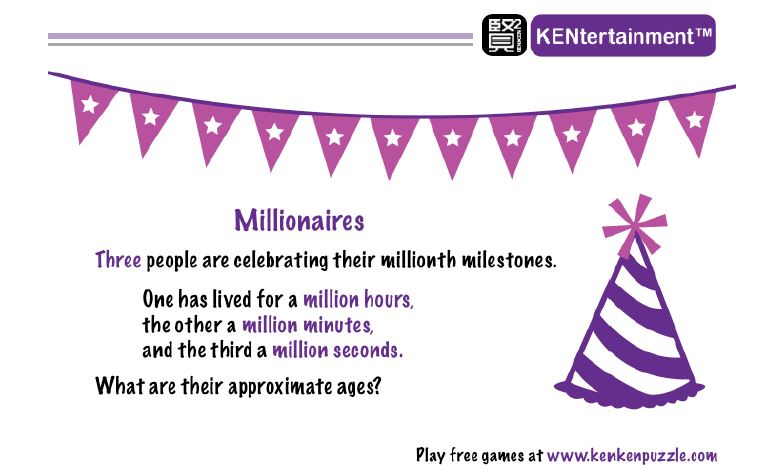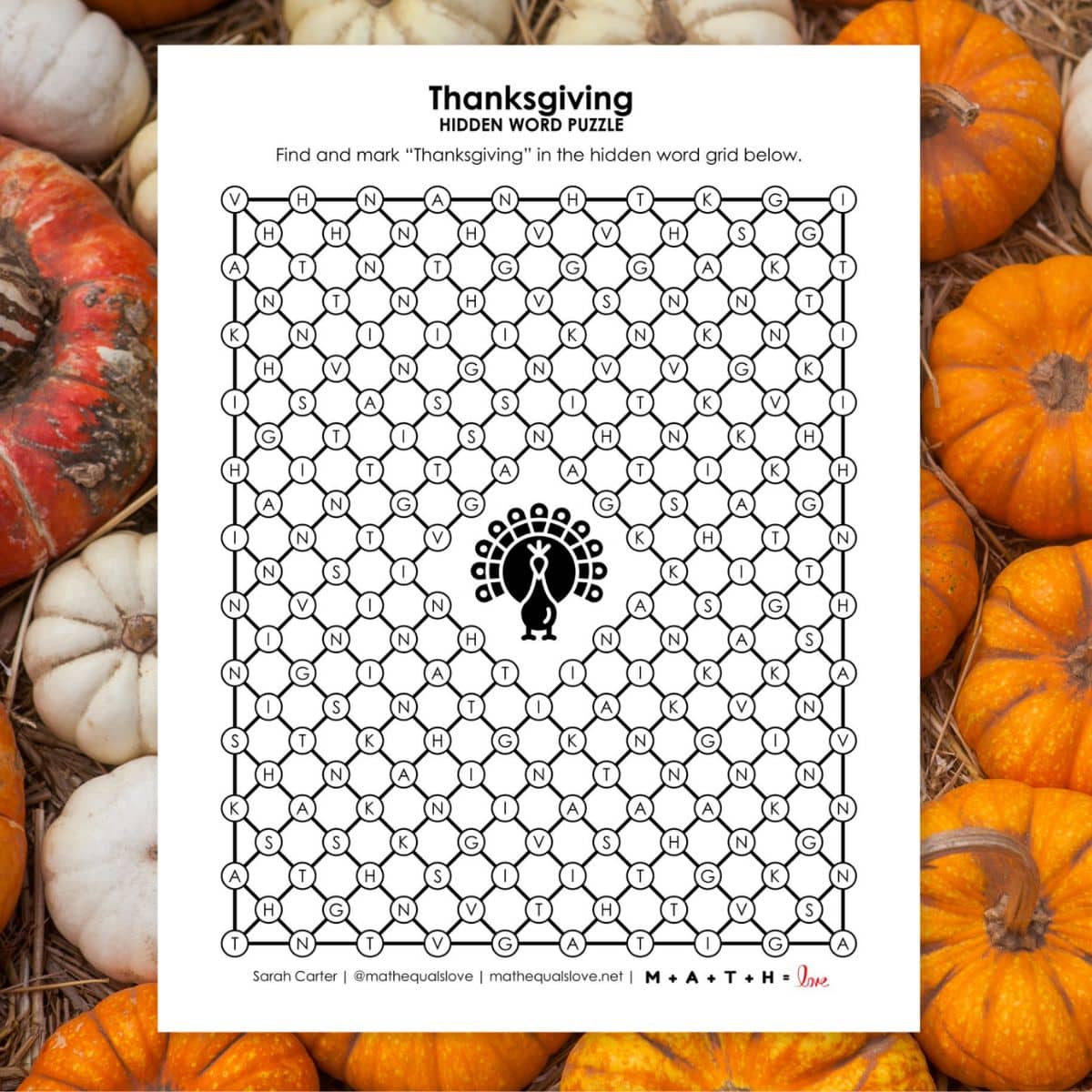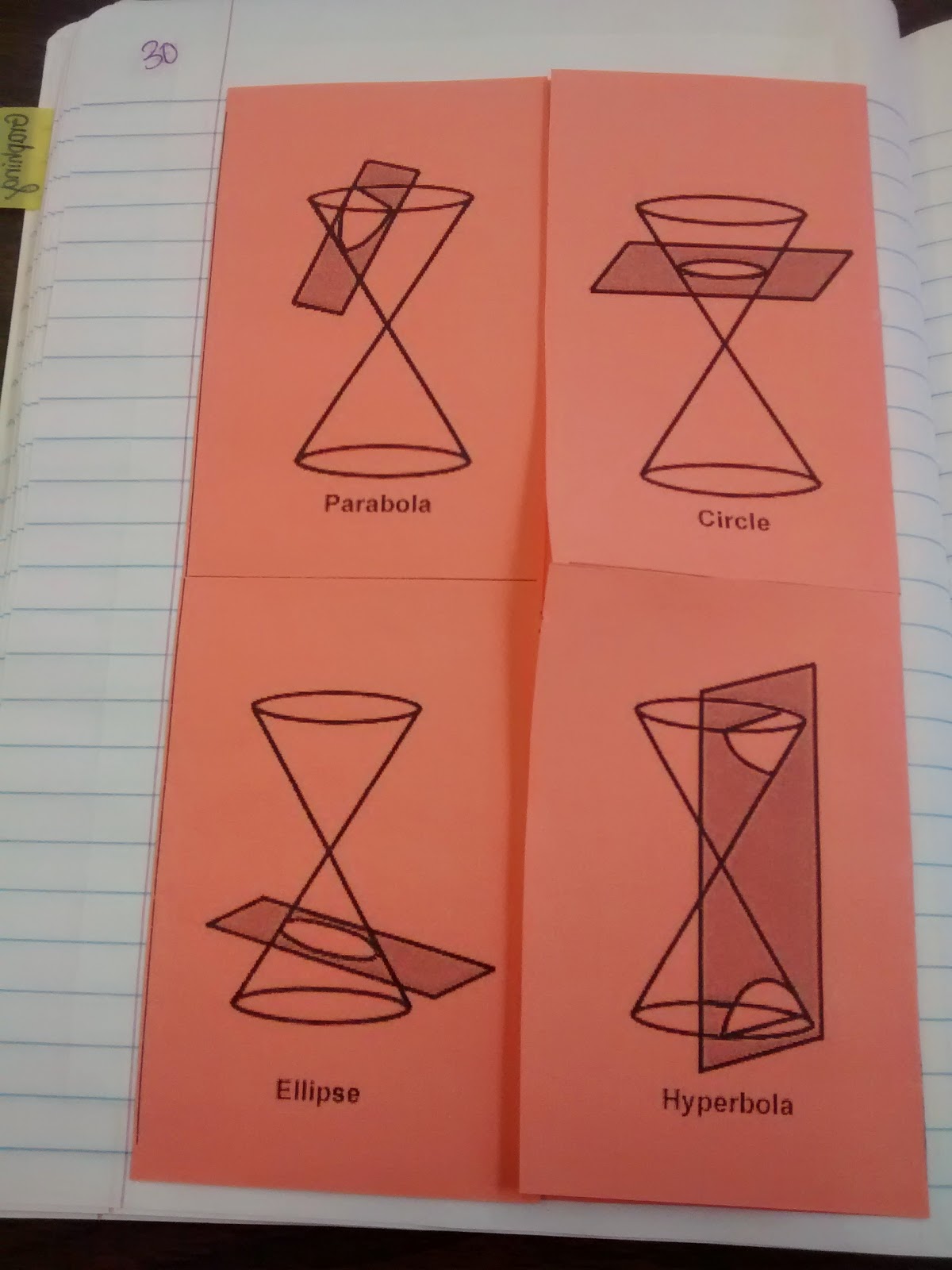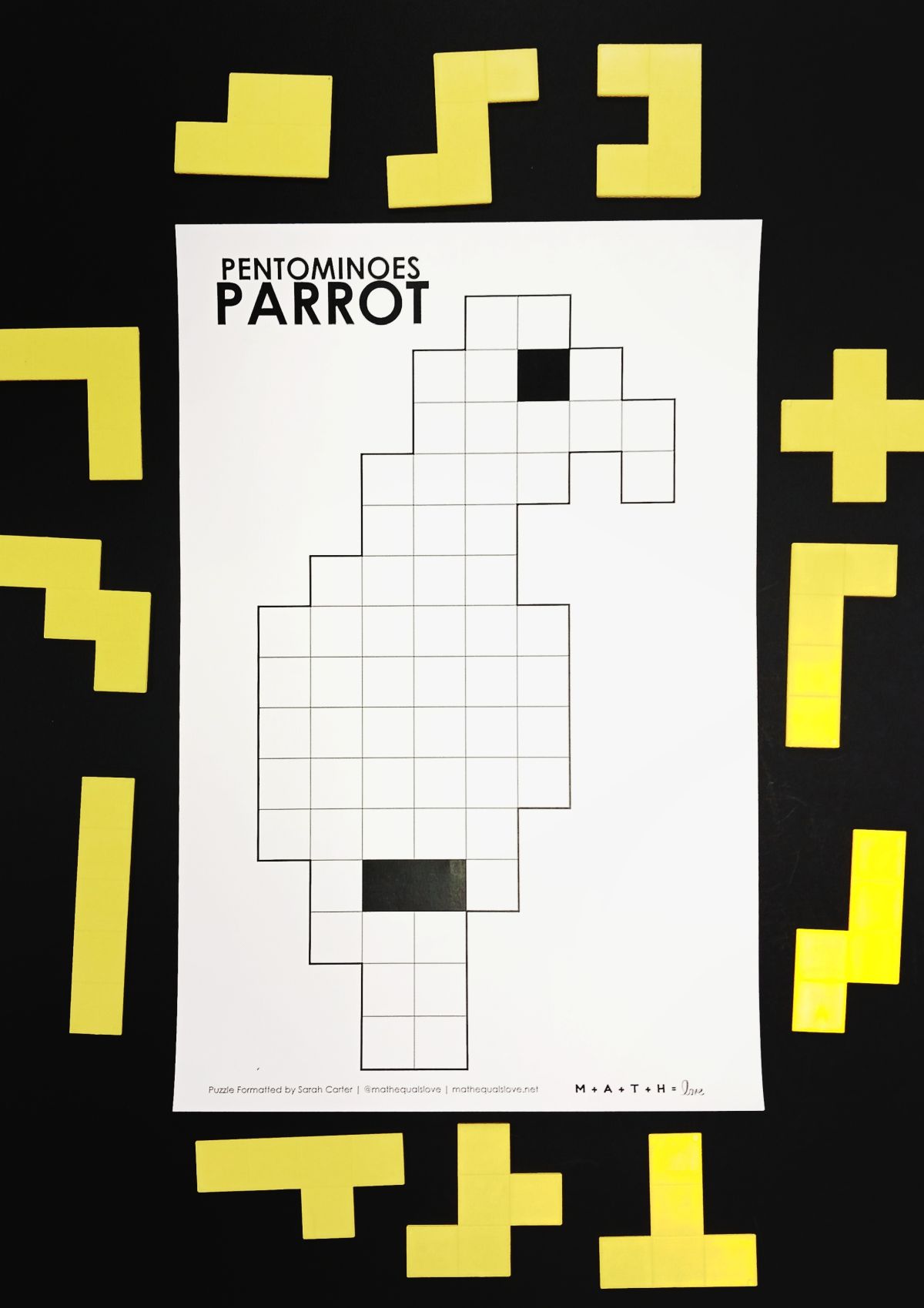Proof! Math Game Review
This blog post contains Amazon affiliate links. As an Amazon Associate, I earn a small commission from qualifying purchases.
Have you heard of Proof!? Proof! is the brainchild of Master Theorem Games and promises to be “the fast-paced game of mental math magic.” My husband and I received a copy of Proof! for Christmas, and we set down several weeks ago to give it a play. I knew instantly that it needed to make an appearance here on my blog. I’m excited to share a new math game review with you today.
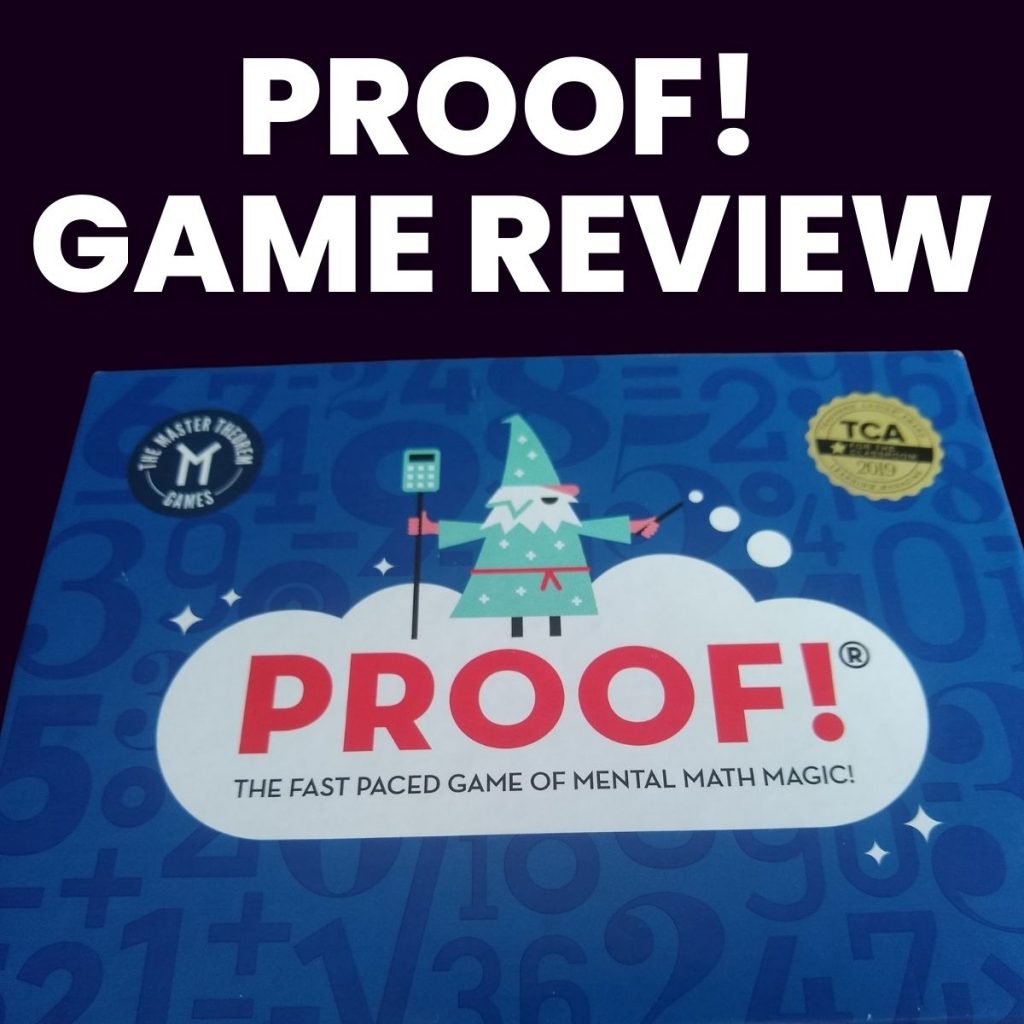
Proof! Math Game Review
The back of the box gives a brief overview of how the game of Proof! works. This is a game for 2-6 players that is played with a deck of cards arranged in a 3 x 3 grid. Players compete to find cards from the grid which can be arranged to form an equation. You can use as many cards in your equation as you would like.
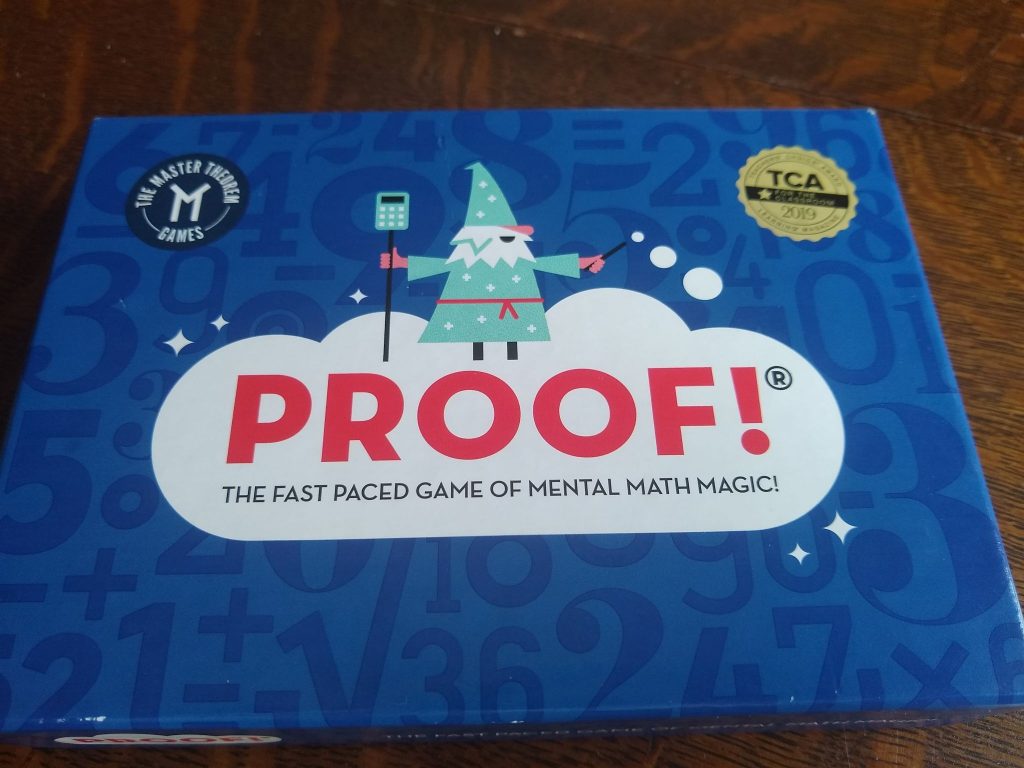
Once you find an equation, shout the result and show your proof. If you are correct, you claim those cards. They are removed from the grid and replaced with new cards from the deck. In this way, the game reminds me very much of the game play mechanics of SET.
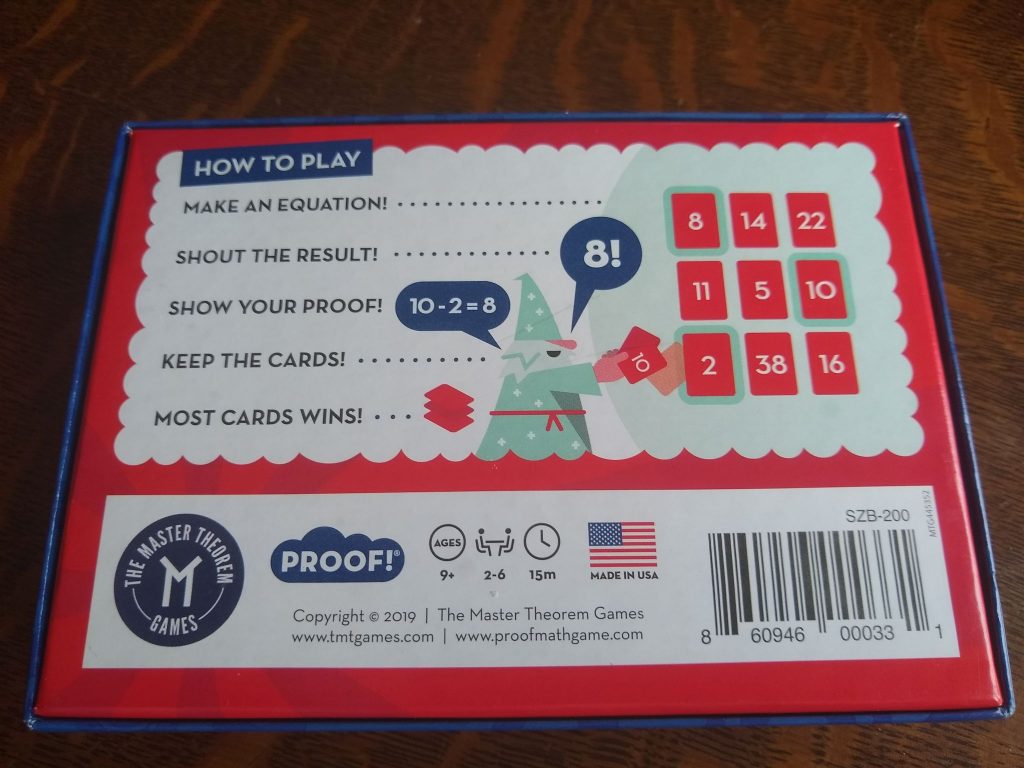
I really appreciate the fact that the game of Proof! is manufactured in the United States. It is so rare to see that nowadays! The box reckons that the game is appropriate for ages 9 and up. I would agree with this. I do like that the game can very naturally be scaffolded so that adults can play with children.
You could easily institute a rule that adults must use at least four cards in each equation in order to help even the playing field. This would leave the more obvious equations such as the 10-2=8 mentioned to younger players.

What’s in the Box?
So, what do you get in the box if you buy a copy of Proof!? Let’s take a look.
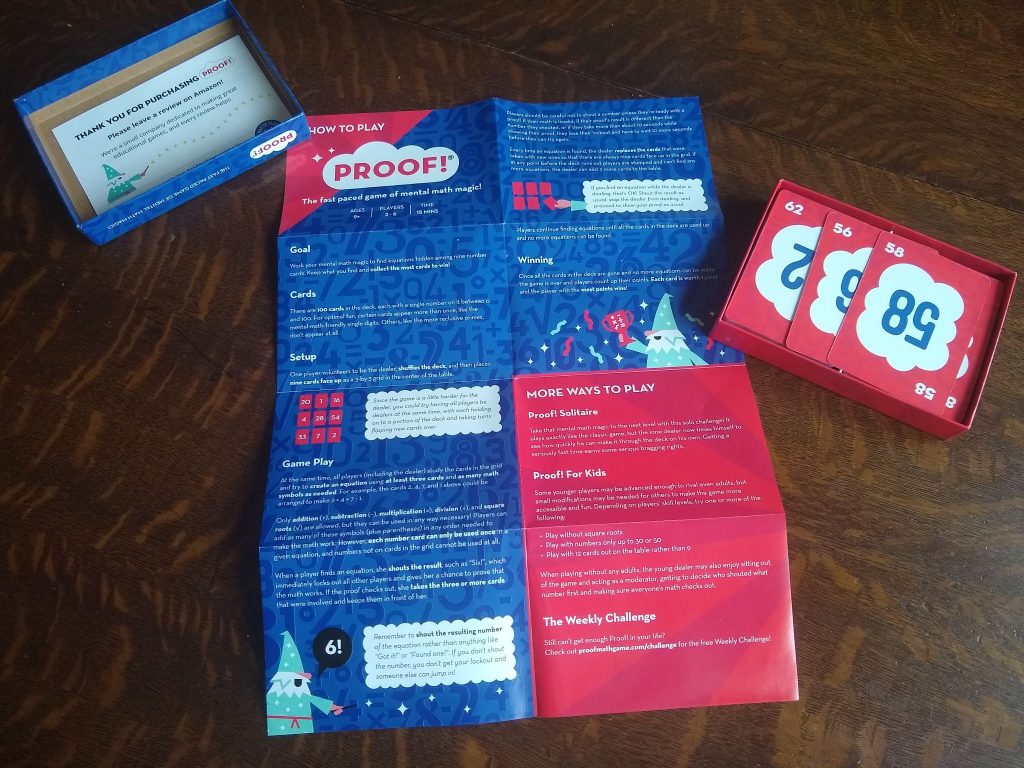
You will receive a deck of 100 cards and a set of thorough instructions. I appreciate the well-written instructions that are filled with plenty of examples.
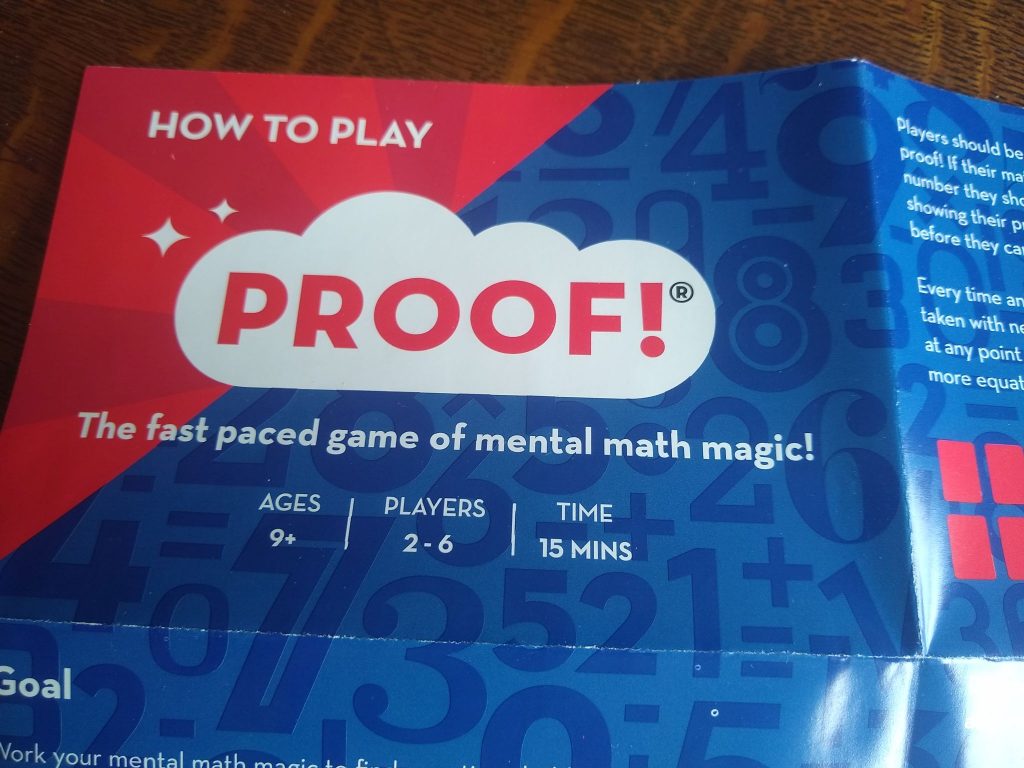
Game play is relatively short at only 15 minutes. This makes it a great game for use in the classroom.
Proof! Game Variations
The instructions also feature several game play variations for Proof! Proof Solitaire is just what it sounds like. You search for equations and replace cards just like in the normal game play, but you are playing by yourself. The goal is to race through the deck as fast as possible.
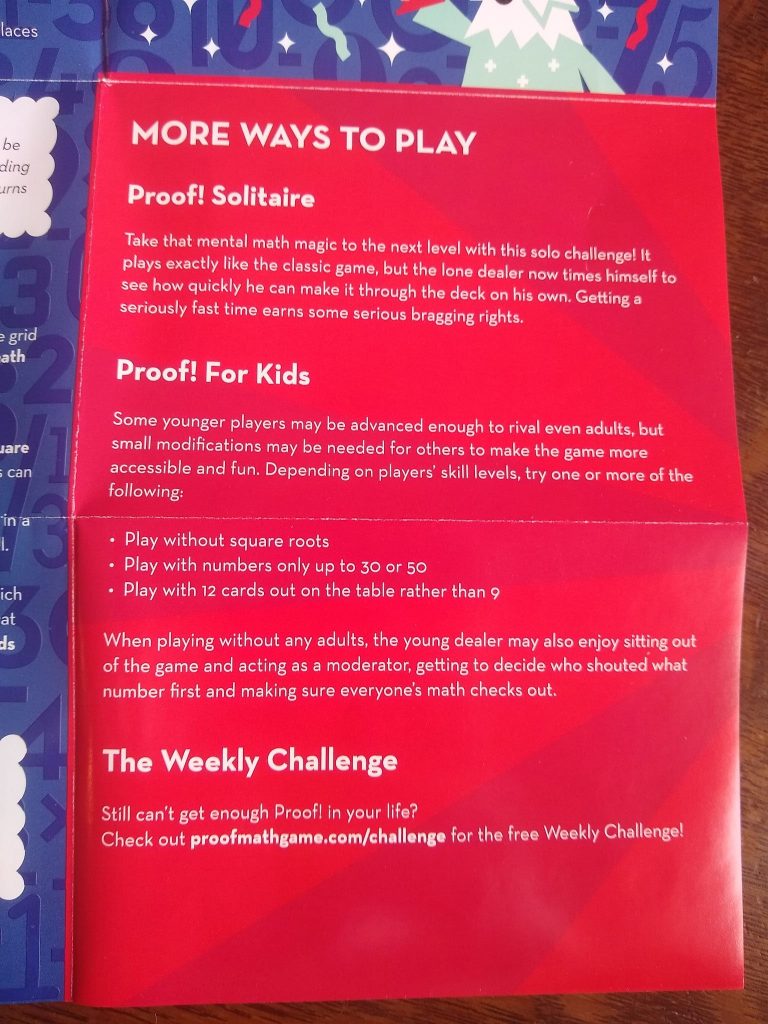
They also give suggestions for modifying game play for kids. I like the suggestions of using 12 cards instead of 9 and playing with only the cards up to a certain number like 30 or 50.
I believe the greatest potential this game has for use by students and in the classroom is through their online weekly challenge. More about that later, though…
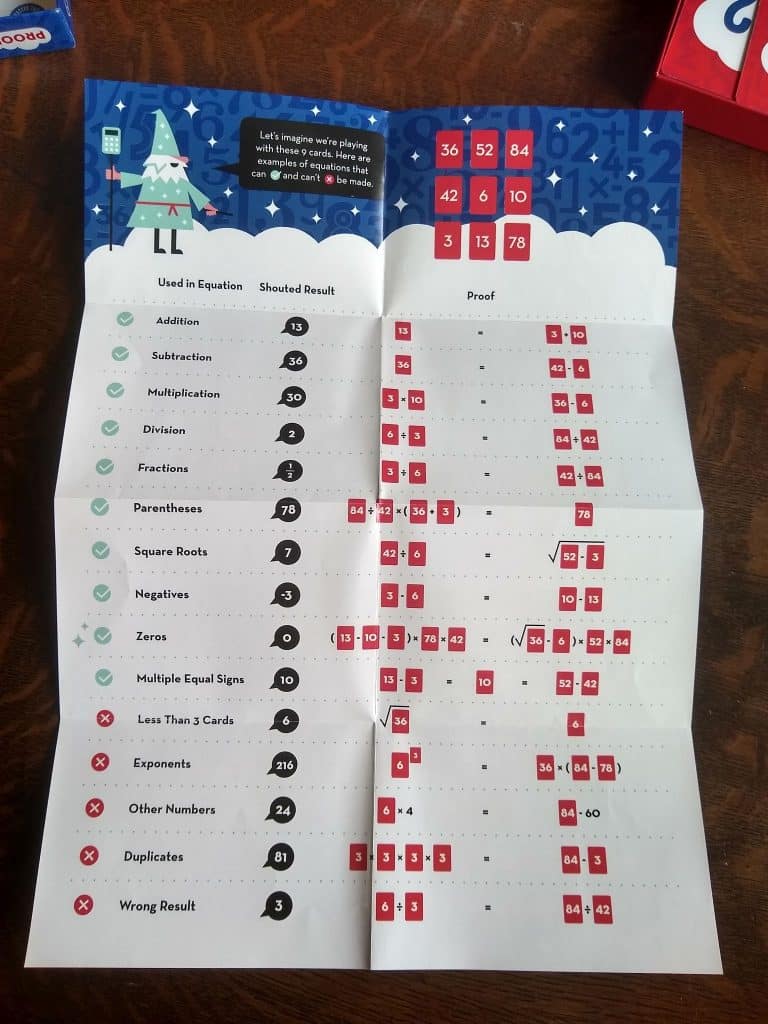
The back of the instructions feature a sample game and a lot of examples of correct and incorrect equations. So, what is allowed?
- Addition
- Subtraction
- Multiplication
- Division
- Fractions
- Parentheses
- Square Roots
- Negatives
- Zeros
- Multiple Equal Signs
Not allowed?
- Equations with less than 3 cards
- Exponents
- Other Numbers (not shown on cards)
- Duplicates (using a card in the grid more than once)
- Wrong Results
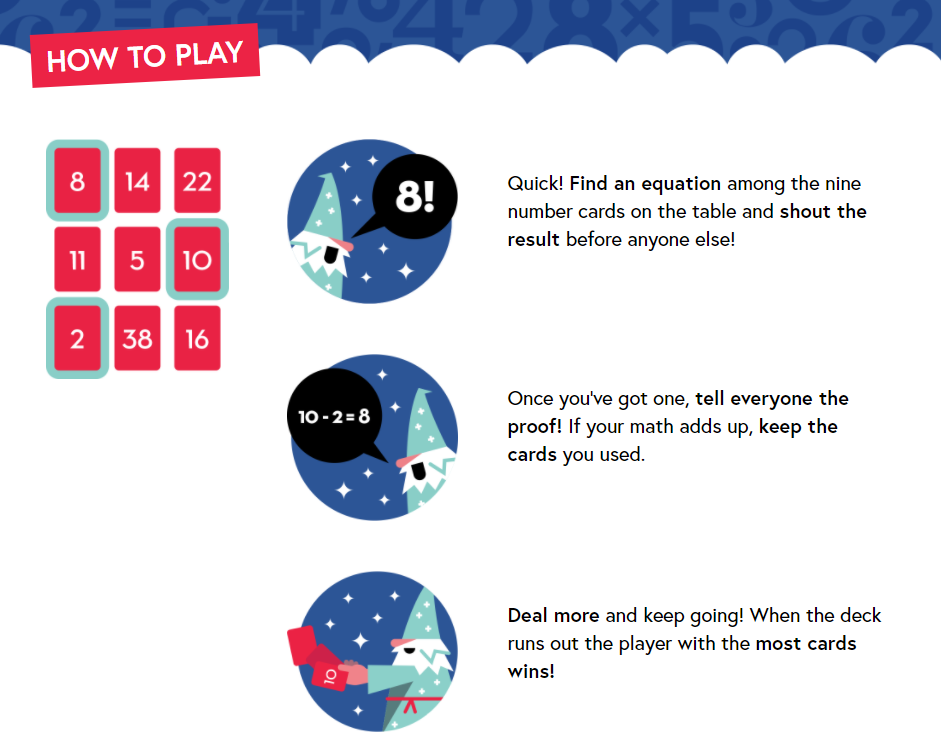
Each game comes with 100 cards ranging from 0-100. When my husband first read this, he thought they must have done their math wrong since that would result in 101 cards. As we read further, though, we discovered that some numbers between 0-100 show up in the deck multiple times while other numbers (mostly primes) do not show up at all.
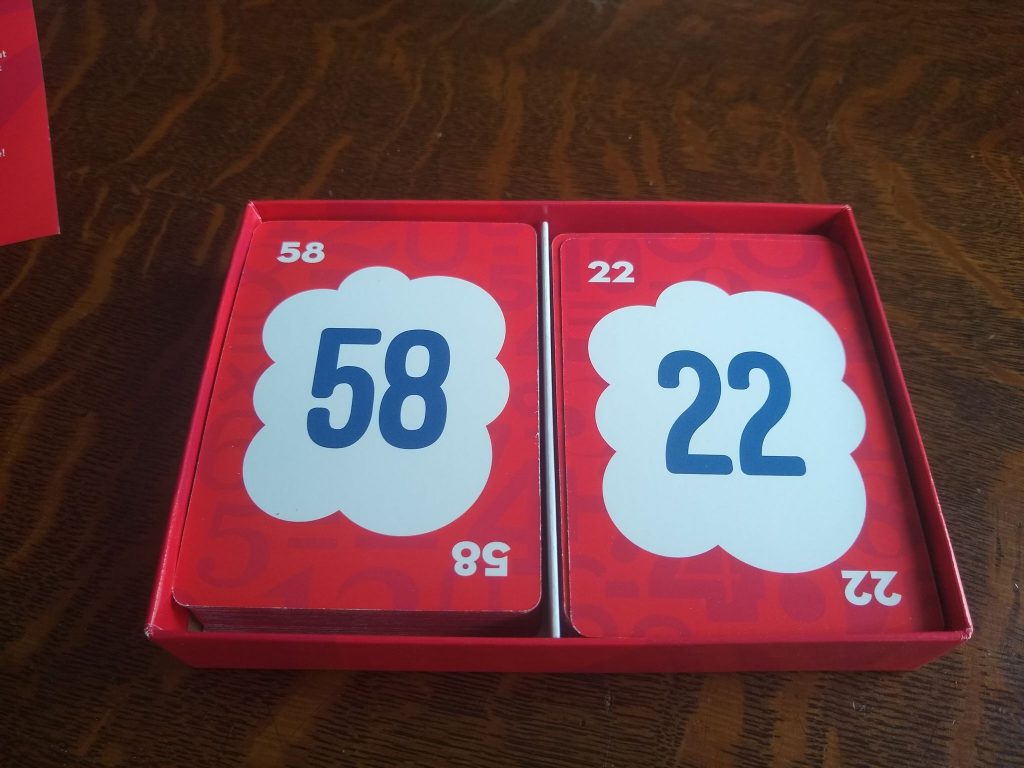
I think the artwork on the back of the cards is very cute!
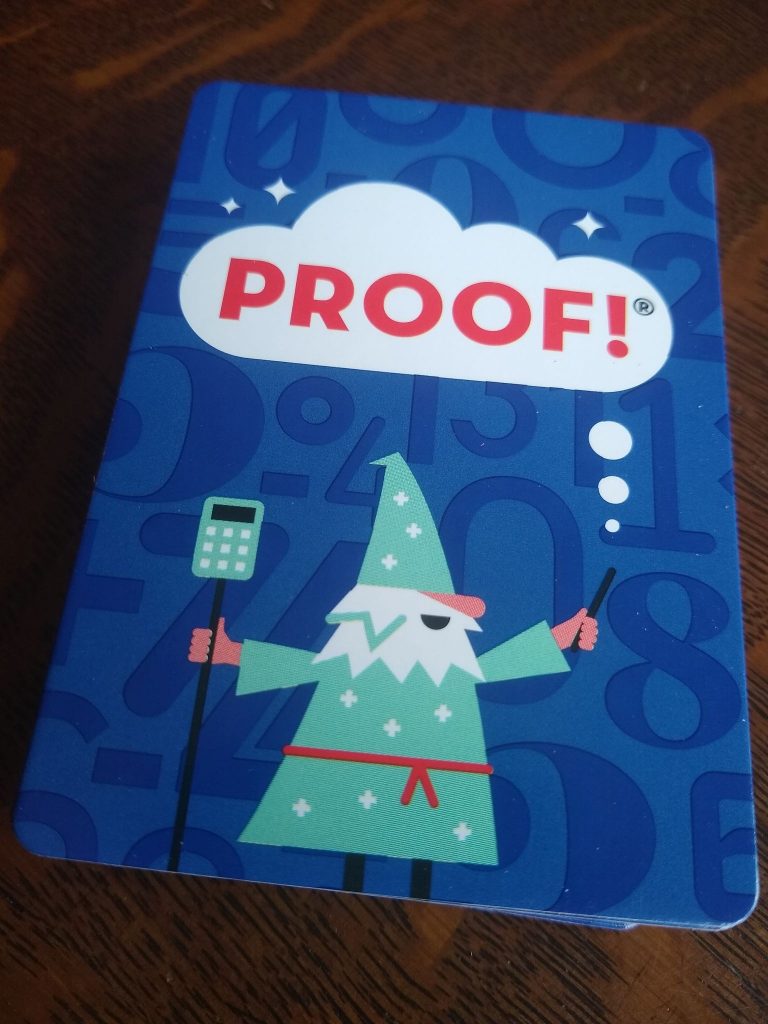
Game Walk Through
Let’s take a look at a sample game of Proof!.
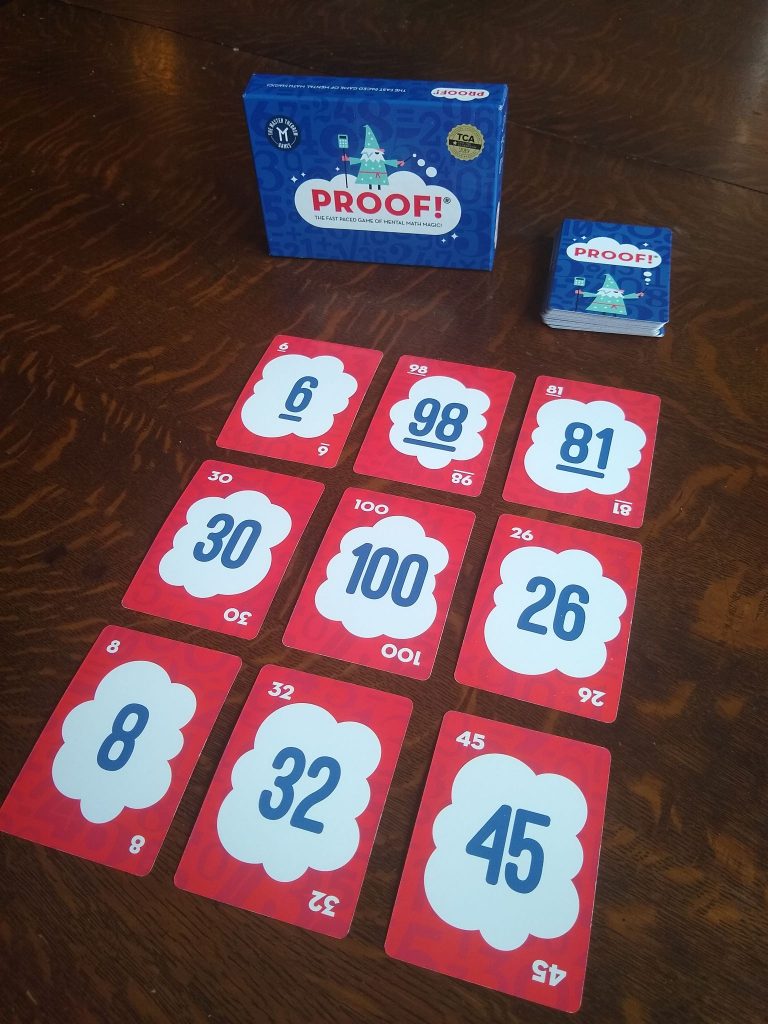
Here are the 9 cards I dealt out after shuffling the deck. Can you spot any equations?
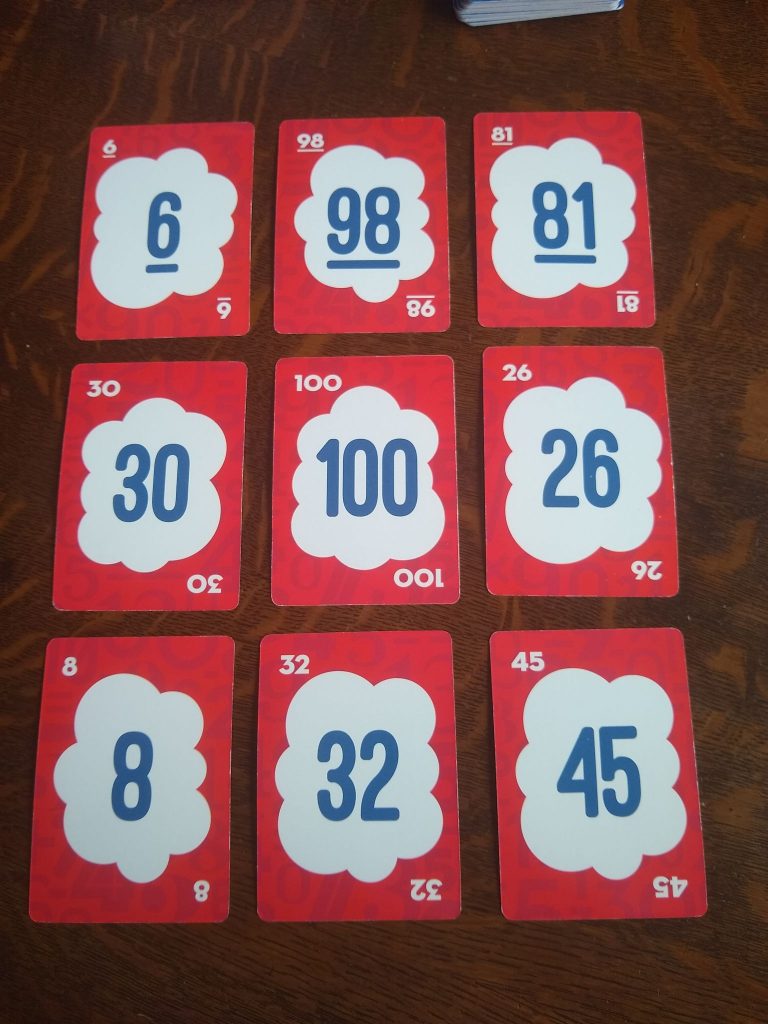
When I saw this, my mind immediately shouted out 2.

When my husband and I played through a few rounds of Proof! we found that we had vastly different strategies. My strategy was to find equations as quickly as possible. I tended to gravitate toward equations involving subtraction.
Shaun’s strategy was to create equations which used as many cards as possible. This meant that he would often see solutions before I would, but he wouldn’t call them out because we was always looking for an even better solution. It made for a very interesting game where we really weren’t sure who was winning. I won lots more hands, but his equations sometimes involved all 9 cards in the grid.
Once I grab my cards, there are now gaps in the grid of 9 cards.
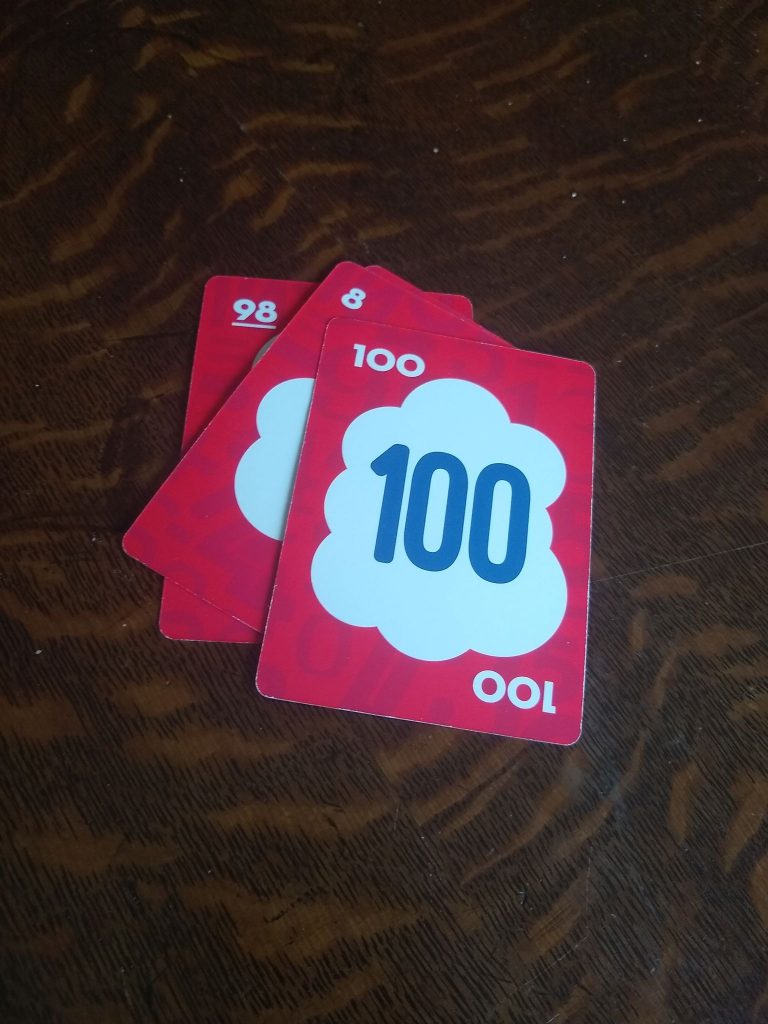

It is the dealer’s task to refill these gaps with new cards from the deck. What equation do you spot?
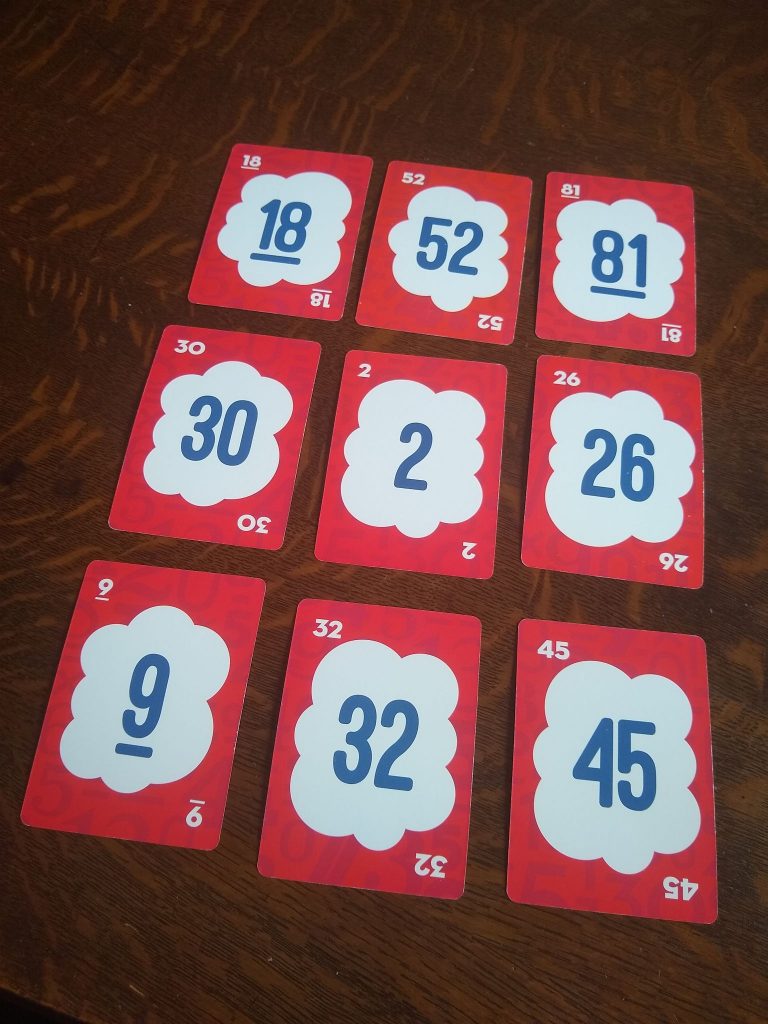
I spotted another 2. And, look it’s another subtraction equation. It’s interesting that I tend toward subtraction since it would have been just as easy to shout 32 and use 30 + 2 = 32.
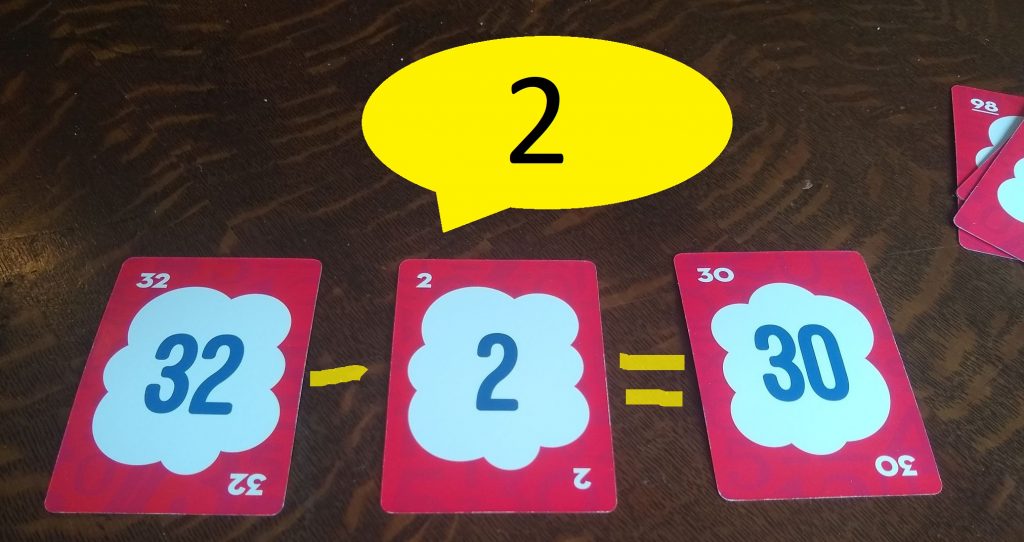
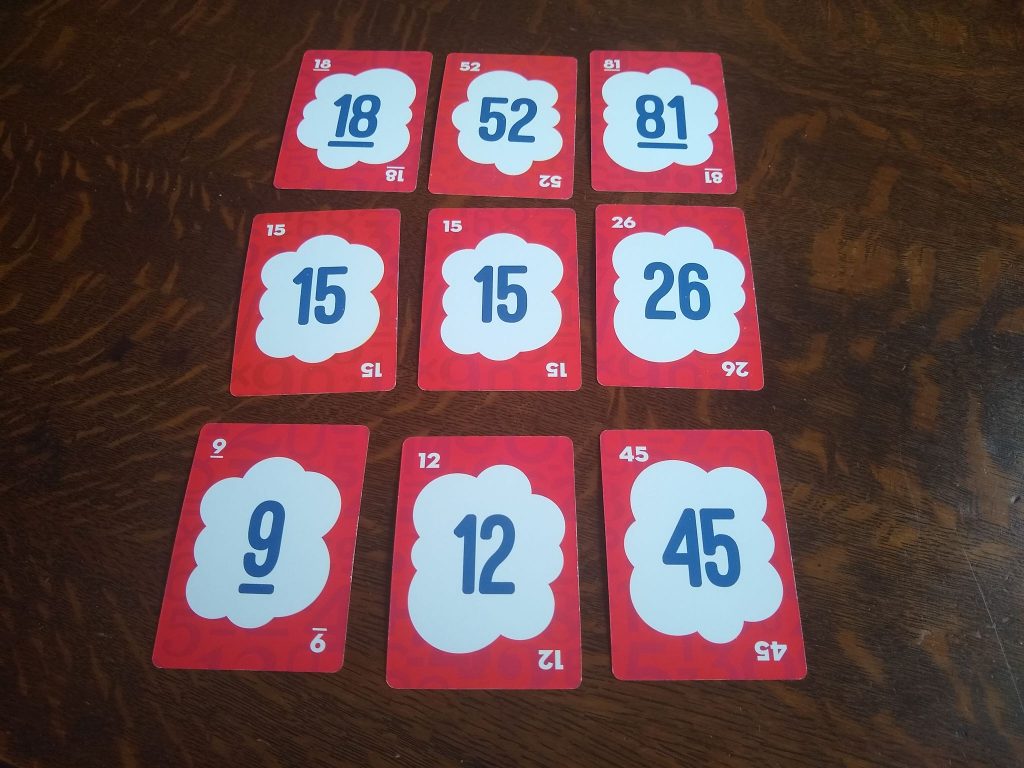
And, that’s how the game works. Very simple game play. Find an equation. Shout the result. Show proof. Claim your cards. Repeat until you have gone through the entire deck. This is perfect for using in a math class because it is great mental math practice AND easy to explain to students. There are so many good games out their on the market that aren’t suitable for classrooms because the rules are just too complicated to explain quickly.
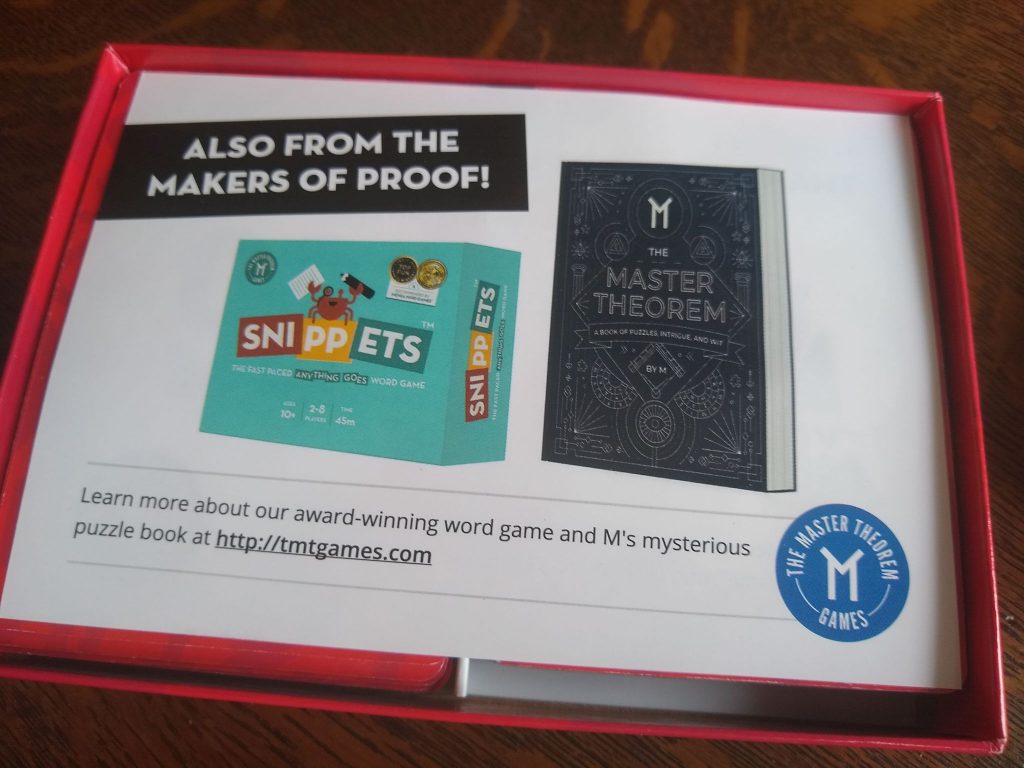
This game was fun to play, and I can see it making a great station in a stations rotation activity. It would also make a great activity to pull out for early finishers.
160+ Free Weekly Challenges
Want to give the game a try in your classroom before you pick up your own copy? You are in luck. (And, I can pretty much guarantee that you are going to want your own copy after you check out their weekly math challenges.)
If you check out Proof’s website, there is a button at the top titled “Challenges.”
Each week, they post a new challenge. Each challenge features a grid of 9 cards and a challenge to complete. Last week’s challenge was to find a pair of 33’s. To be honest, I was a bit confused by this wording at first, but I soon realized that they just meant create an equation where both sides were equal to 33.
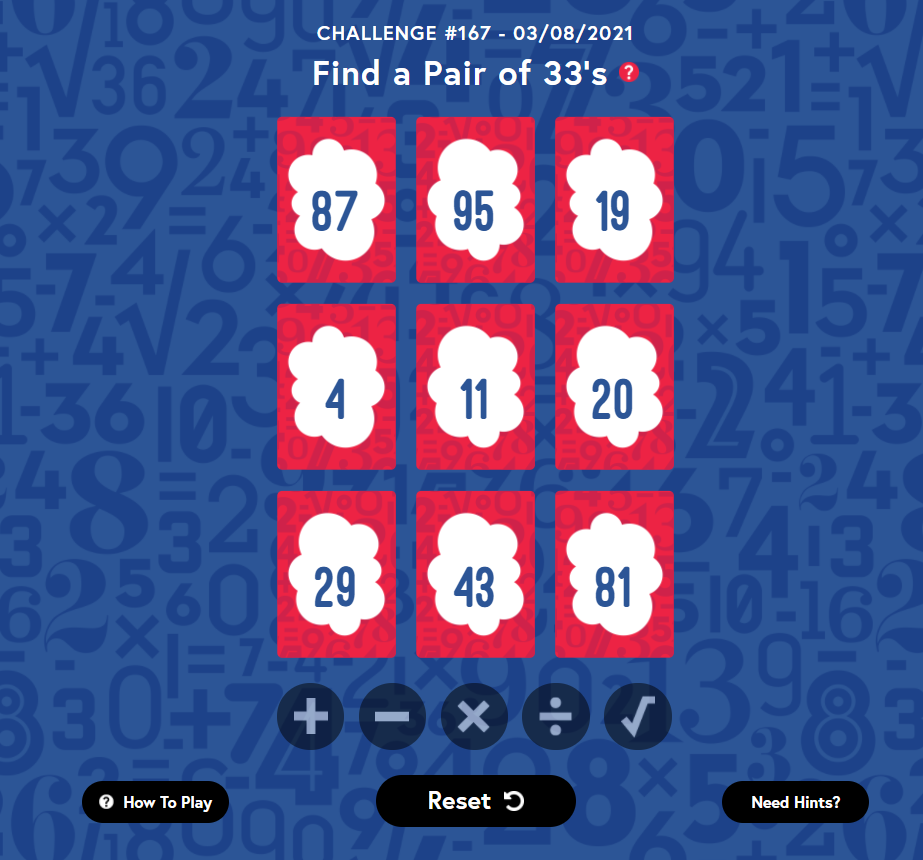
Wouldn’t this make great bellwork or a brain break during a lesson? Students can even interact with the cards and click the operations to check their work.
The lovely folks at Proof! have been posting these weekly challenges since January of 2018. I appreciate the variety behind the challenges. They don’t always specify a number. For example, challenge 2 asks you to make a pair (an equation) using only division. Challenge 3 wants the result of each side of the equation to be greater than 100. Challenge 8 wants the result to be less than 0.

They continue to post these challenges weekly. As of today, there are 168 challenges on their website. This means there will soon be enough challenges where you could post one DAILY in your classroom.

I haven’t played around with it yet, but I believe they have a feature where you can sign in and track your progress as you work through each of the challenges. Very cool!
I’m excited about this game, and I look forward to adding it to my classroom game shelf once COVID is a thing of the past and students can enjoy playing games in class once again. Until then, I look forward to using the weekly challenges with my students.
Want more game reviews? Check out my game reviews page!

